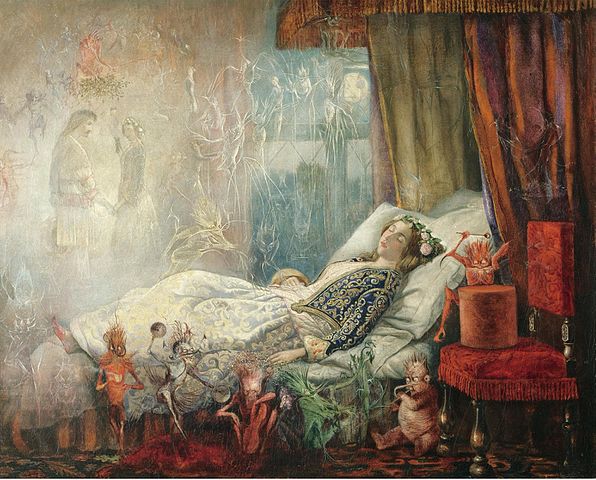
When you think of fairy tales, the enchanting world of mystical creatures, tiny winged beings, and magical landscapes comes to mind. But did you know that one artist encapsulated this whimsical realm so vividly that he earned the nickname “Fairy Fitzgerald”? Let’s delve into the captivating life of John Anster Fitzgerald, a painter whose work continues to fascinate and mystify art lovers to this day.
Early Life and Inspirations
John Anster Fitzgerald was born in 1832 in the bustling metropolis of London, right in the heart of the Victorian era. This period, marked by significant industrial change and a blossoming interest in the arts, was the perfect backdrop for a budding artist. His father, William Thomas Fitzgerald, was a poet and writer who had a penchant for the arts. This familial connection to creativity might have been the spark that ignited John’s passion for painting.
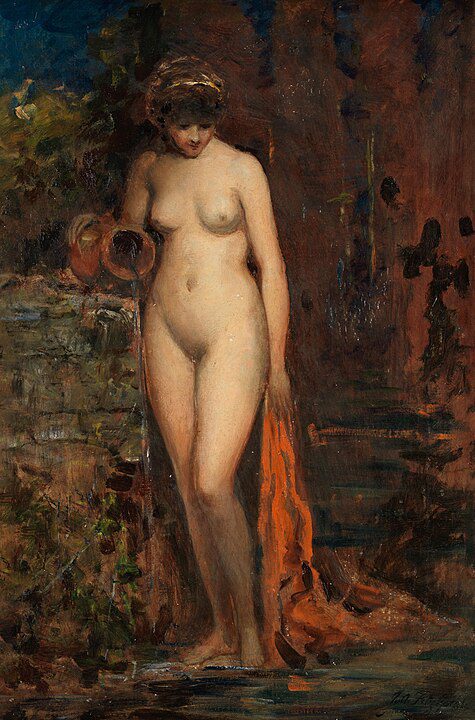
From a young age, Fitzgerald showed an interest in the mystical and the otherworldly. Imagine a young boy, wandering through the verdant parks of London, daydreaming about the unseen worlds that lay just beyond our perception. This curiosity would later define his artistic career.
An Artistic Journey into Fantasy
John Anster Fitzgerald’s formal education in art is not well-documented, which adds an air of mystery to his early development as a painter. Despite this, by the 1850s, he began to exhibit his work at the Royal Academy in London, a prestigious platform for any artist of the time. His early works were a mix of portraits and genre scenes, but it was not long before he found his true muse in the world of fantasy.
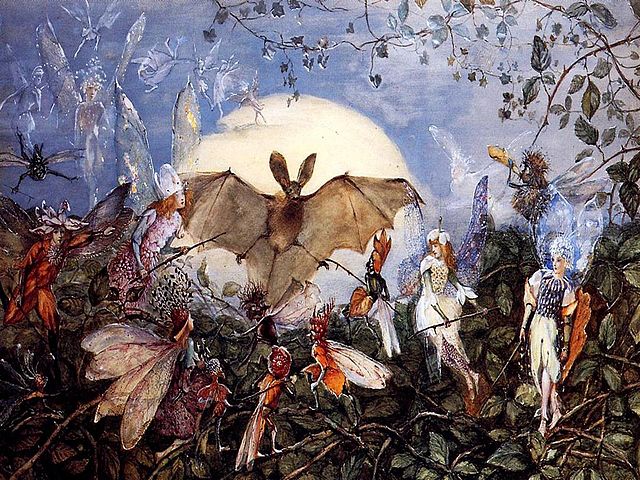
One might wonder, why did Fitzgerald choose fairies as his central theme? Victorian society had a burgeoning interest in the supernatural, fueled by folklore, literature, and the spiritualist movement. This fascination permeated every corner of culture, from literature to theatre. Fitzgerald, with his imaginative mind, was undoubtedly influenced by this societal trend.
Moreover, fairies provided a unique avenue for expressing emotions and narratives beyond the mundane. They allowed him to explore themes of beauty, danger, and the unknown, all wrapped in an ethereal package that appealed to the Victorian love for the fantastical.
The Art of Fairy Painting
Fitzgerald’s fairy paintings are characterized by their intricate detail and dreamlike quality. Imagine stepping into a world where every leaf glimmers with dew, and every shadow holds a secret. His use of vibrant colors and meticulous attention to detail created immersive worlds that drew viewers into a realm of fantasy.
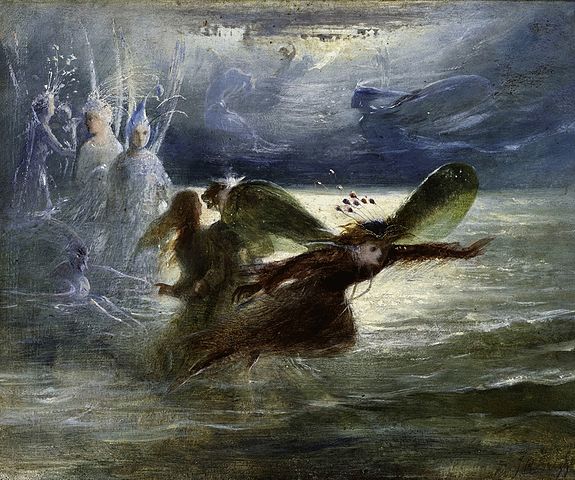
Fitzgerald’s use of color was particularly noteworthy. He employed a palette that ranged from the soft pastels of fairy wings to the deep, rich tones of midnight skies. This vivid coloration was not just for aesthetic pleasure; it helped to convey the emotional depth and complexity of his subjects. His paintings often featured fairies engaged in mysterious, sometimes sinister, activities, hinting at the dual nature of these mythical beings.
While many of Fitzgerald’s works appear whimsical at first glance, a closer look reveals darker undertones. His paintings often include elements of danger, such as malevolent fairies or ominous creatures lurking in the shadows. This contrast between light and dark reflects the Victorian fascination with the supernatural’s dual nature – both enchanting and frightening.
Notable Works and Their Impact
Several of Fitzgerald’s paintings stand out for their complexity and beauty. Let’s explore a few notable examples:
- “The Fairies’ Banquet”: This painting depicts a lavish gathering of fairies, with intricate details showcasing the opulence of their world. The attention to detail in the depiction of their costumes and surroundings immerses viewers in a world of fantasy.
- “The Chase of the White Mice”: In this piece, fairies are engaged in a playful yet slightly sinister hunt for white mice. The dynamic composition and vivid colors convey a sense of movement and excitement, inviting viewers to ponder the story behind the scene.
- “The Enchanted Forest”: A masterpiece that captures the ethereal beauty and hidden dangers of a forest inhabited by fairies. The interplay of light and shadow, combined with Fitzgerald’s trademark detail, creates a hauntingly beautiful landscape.
Personal Life and Mystery
Despite his artistic success, John Anster Fitzgerald remained an enigmatic figure. He was known for being reclusive, preferring the company of his own imagination to the bustling social scene of Victorian London. This reclusiveness only added to the mystique surrounding his art.
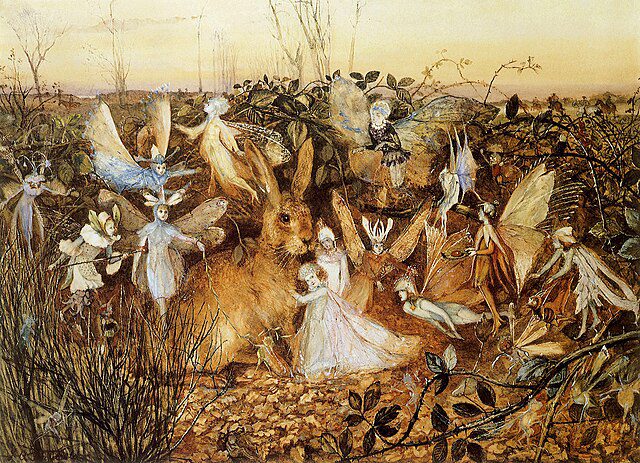
Fitzgerald was married to Emily Mather, and together they had several children. However, details about his family life are scarce, overshadowed by the allure of his artistic persona. It’s as if Fitzgerald himself preferred to remain a shadowy figure, much like the fairies he painted.
The Legacy of Fairy Fitzgerald
John Anster Fitzgerald passed away in 1906, but his work continues to enchant and inspire. His paintings, though created in a time when industrialization was transforming the world, offered an escape into a realm where imagination reigned supreme. They provided a glimpse into a world where magic was real, and anything was possible.
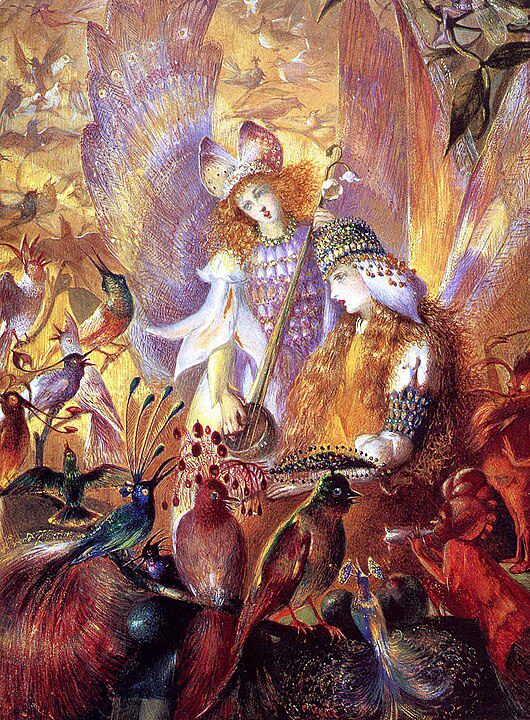
Fitzgerald’s influence can be seen in the works of later fantasy artists, such as Arthur Rackham and Edmund Dulac, who continued to explore the themes of folklore and magic in their illustrations. His work also resonates with modern audiences, reflecting a timeless fascination with the mystical and the otherworldly.
Today, Fitzgerald’s paintings are celebrated in galleries and collections worldwide, appreciated for their technical skill and imaginative depth. They continue to captivate audiences, reminding us of the power of art to transport us beyond the boundaries of reality.
A Final Reflection
In an age dominated by technology and realism, John Anster Fitzgerald’s work stands as a testament to the enduring power of imagination. His paintings invite us to explore the hidden corners of our minds, to embrace the fantastical, and to remember that magic is just a brushstroke away.
So, why do we love Fitzgerald’s fairies? Perhaps it’s because they remind us of the wonder we felt as children when the world was full of possibilities, and the veil between reality and fantasy was gossamer thin. Or maybe it’s because they speak to a deeper truth – that there is beauty in mystery, and sometimes, the most enchanting stories are the ones we can’t quite explain.
As we look at Fitzgerald’s work today, we are reminded of the timeless allure of fairy tales and the power of art to transport us to worlds unseen. In the end, John Anster Fitzgerald’s legacy is not just in his paintings but in the magic and wonder he inspires in each of us.
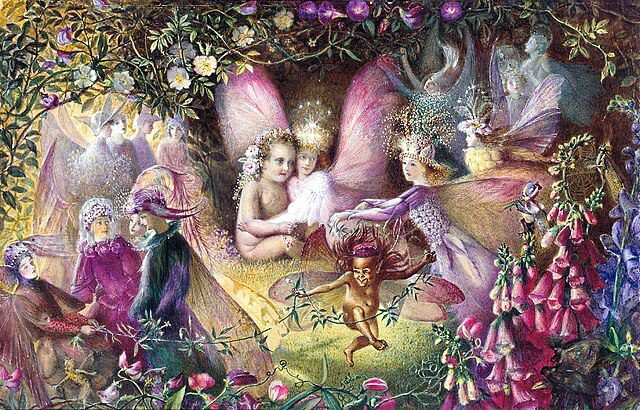
Isn’t that the true essence of art? To open our eyes to the beauty of the unknown and invite us to dream a little bigger. Fitzgerald’s fairies continue to flutter in our imaginations, a testament to the enduring enchantment of his work. So next time you find yourself gazing at one of his masterpieces, let your imagination take flight and join the dance of the fairies. After all, in Fitzgerald’s world, anything is possible.




